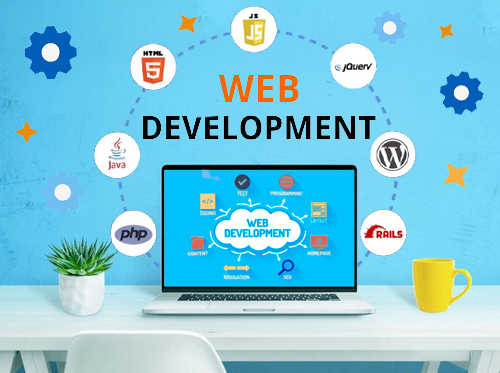In today’s digital age, a compelling online presence is paramount for businesses, organizations, and individuals alike. Website development, the process of creating and maintaining websites, has evolved dramatically over the past few decades. From the rudimentary text-based pages of the early internet to the dynamic, interactive experiences of today, website development combines art, science, and technology to craft the digital spaces we visit daily. In this blog post, we will explore the history, current trends, and future prospects of website development.
The Genesis of the Web: A Historical Overview
The history of website development dates back to the early 1990s, with the creation of the World Wide Web by Tim Berners-Lee. The first website, info.cern.ch, launched in 1991, was a simple text-based page providing information about the WWW project. The early web was characterized by static HTML pages, basic hyperlinks, and minimal styling.
The mid-1990s saw the introduction of graphical browsers like Netscape Navigator, which significantly enhanced user experience by supporting images, tables, and forms. This era also witnessed the rise of web development languages such as JavaScript, enabling interactive features and laying the foundation for modern web applications.
The Boom of the Web: 2000s to Present
The turn of the millennium marked a pivotal period in website development. Key developments included:
- Content Management Systems (CMS): Platforms like WordPress, Joomla, and Drupal democratized web development, allowing users without extensive technical knowledge to create and manage websites.
- Web 2.0: This era introduced dynamic content, user-generated content, and social media integration, transforming websites into interactive platforms for collaboration and communication.
- Responsive Design: With the proliferation of mobile devices, responsive web design became essential, ensuring websites adapt seamlessly to different screen sizes and orientations.
- E-commerce Evolution: Online shopping platforms like Amazon and eBay paved the way for robust e-commerce solutions, leading to the rise of platforms like Shopify and WooCommerce.
- Modern Trends in Website Development
Website development today is influenced by several cutting-edge trends:
- Single Page Applications (SPAs): Frameworks like Angular, React, and Vue.js facilitate the creation of SPAs, which provide a seamless user experience by loading content dynamically without refreshing the page.
- Progressive Web Apps (PWAs): PWAs combine the best of web and mobile apps, offering offline access, push notifications, and a native app-like experience, all within a web browser.
- Artificial Intelligence and Chatbots: AI-powered chatbots enhance user engagement by providing instant support and personalized recommendations, improving overall user experience.
- Motion UI: Incorporating animations and transitions, Motion UI enhances the visual appeal and usability of websites, making interactions more intuitive and engaging.
- Headless CMS: Decoupled from the frontend, headless CMS solutions like Strapi and Contentful provide flexibility, allowing developers to deliver content across multiple channels and devices.
The Future of Website Development
The future of website development is poised to be shaped by several emerging technologies and practices:
- Voice Search Optimization: As voice assistants like Siri, Alexa, and Google Assistant become more prevalent, optimizing websites for voice search will be crucial for accessibility and user engagement.
- WebAssembly: Offering near-native performance for web applications, WebAssembly will enable complex applications like games and video editing software to run efficiently in the browser.
- Augmented Reality (AR) and Virtual Reality (VR): AR and VR technologies will create immersive experiences, particularly in sectors like e-commerce, real estate, and education.
- Cybersecurity: With increasing cyber threats, incorporating robust security measures such as HTTPS, secure coding practices, and regular security audits will be essential.
- Sustainable Web Development: As environmental awareness grows, developers will focus on creating energy-efficient websites by optimizing code, reducing resource consumption, and utilizing green hosting solutions.
Conclusion
Website development is a dynamic field that blends creativity, technology, and strategy to create compelling digital experiences. From its humble beginnings to the sophisticated, interactive platforms of today, the journey of web development reflects the broader evolution of the internet itself. As new technologies and trends emerge, staying informed and adaptable will be key for developers and businesses seeking to thrive in the digital landscape.
The future promises exciting advancements, from AI-driven personalization to immersive AR/VR experiences. By embracing these innovations and prioritizing u


